Space News
Digitaltrends
417

Image Credit: Digitaltrends
Treasure trove of mysterious black holes uncovered by dark energy instrument
- Scientists using the Dark Energy Spectroscopic Instrument (DESI) have discovered a trove of intermediate-mass black hole candidates.
- 300 promising objects were identified, which is the largest group found to date.
- These intermediate black holes can be found in both large galaxies and smaller dwarf galaxies.
- The findings will help scientists better understand the relationship between black holes and the galaxies they inhabit.
Read Full Article
25 Likes
Universe Today
13
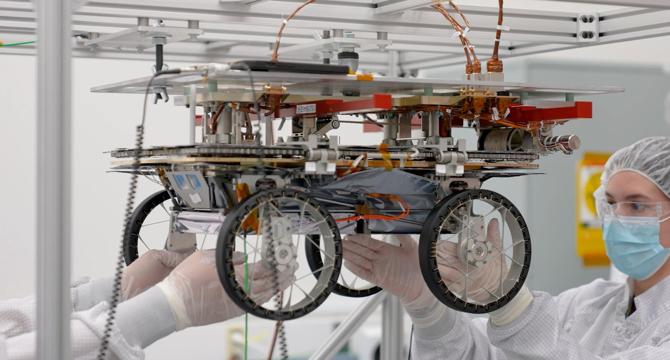
Image Credit: Universe Today
CADRE’s Three Adorable Rovers Are Going to the Moon
- A trio of lunar rovers, called CADRE, is set to demonstrate autonomous exploration capability on the Moon.
- The rovers will communicate with each other and a remote base station, showcasing their ability for autonomous exploration.
- CADRE rovers, each about the size of a small suitcase, will launch from Kennedy Space Center in Florida on a SpaceX Falcon-9 rocket in late 2025 or early 2026.
- The destination for these rovers is the Reiner Gamma region in the Oceanus Procellarum on the lunar nearside.
Read Full Article
Like
Arstechnica
22

Image Credit: Arstechnica
The odds of a city-killer asteroid impact in 2032 keep rising. Should we be worried?
- An asteroid, designated 2024 YR4, has an increased likelihood of striking Earth in 2032.
- NASA's estimate of the chances of impact has increased from 1.9% to 3.2%.
- The asteroid is large enough to cause localized devastation similar to the Tunguska event of 1908.
- Although the odds are not particularly high, the threat of an impact is still a cause for concern.
Read Full Article
1 Like
Universe Today
289

Image Credit: Universe Today
What’s That Smell? It’s Sulfur – A New Tool For Finding Alien Life
- Astronomers have identified sulfur as a potentially crucial indicator in narrowing the search for life on other planets.
- High concentrations of sulfur dioxide in a planet's atmosphere suggest that the planet is likely uninhabitable, eliminating it from further consideration.
- The presence of water vapor in a planet's atmosphere is an important factor in determining the potential for hosting life.
- Sulfur dioxide levels can help exclude rocky planets orbiting red dwarf stars that are dry, hot, and not suitable for life.
Read Full Article
17 Likes
Discover more
The Robot Report
18

Image Credit: The Robot Report
Stial Technologies unveils humanoid robot for polishing
- Toronto-based Stial Technologies Inc. has acquired STFcore, a 6D force sensor company, and introduced its first humanoid robot, Stial Steven, designed for polishing applications.
- Stial manufactures polishing robots using artificial intelligence and anthropomorphism, enabling autonomous learning of product details and polishing processes.
- The new system represents an advance in embodied intelligence, integrating industrial and humanoid robots for a higher level of autonomous adaptability.
- The Stial Steven robot, equipped with proprietary process database, 6D force sensors, and multimodal AI model, offers superior flexibility and adaptability for intricate and fine polishing tasks.
Read Full Article
1 Like
Earthsky
68

Image Credit: Earthsky
Extreme cold is impacting more than 1,000 miles of US
- Extreme cold has gripped various parts of the U.S., with over 1,300 miles affected by Extreme Cold Warnings.
- Warnings include record low temperatures and dangerous wind chills in regions from North Dakota to South Central Texas.
- Parts of North Dakota are facing temperatures as low as 30 to 40 degrees below 0 degrees Fahrenheit.
- The Extreme Cold Warning is expected to be short-lived, with temperatures forecasted to warm above average by the week's end.
- San Antonio, Texas, is also experiencing unusually cold temperatures, with single-digit wind chills.
- An Arctic high pressure system from Canada is bringing the cold air southwards, affecting multiple states.
- Certain vulnerable groups, like the elderly and homeless, are at increased risk during extreme cold and should take precautions.
- Warning signs of frostbite and hypothermia should be closely monitored, and medical attention sought if symptoms are present.
- It is crucial to stay safe and take necessary measures to avoid cold-related illnesses during this extreme weather.
Read Full Article
4 Likes
Knowridge
137
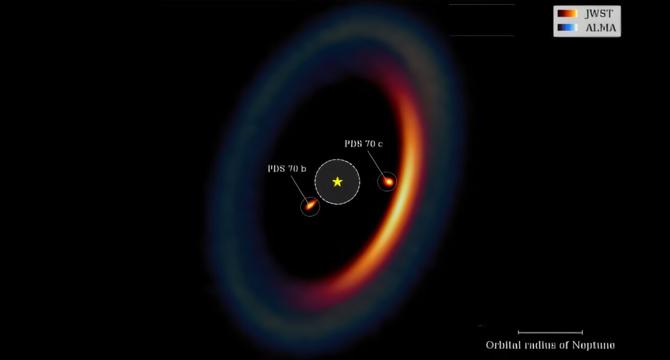
Image Credit: Knowridge
Webb telescope reveals birth of planets in a distant star system
- The James Webb Space Telescope (JWST) has aided astronomers in studying the formation of planets in a distant star system.
- A team led by a Ph.D. candidate used JWST to observe a young star called PDS 70, where two planets are in the process of forming.
- These findings, published in The Astronomical Journal, offer insights into planet formation by gathering material from the surrounding gas and dust.
- PDS 70 is a very young star with a large gap in its disk where planets PDS 70 b and PDS 70 c are actively growing by pulling in gas and dust.
- Observations using JWST's NIRISS instrument revealed details about the planets through a technique called Aperture Masking Interferometry.
- The study confirmed that the planets are accumulating material, supporting the idea of planetary growth through accretion.
- There are indications of circumplanetary disks around the planets, possibly hinting at moon formation similar to Jupiter and Saturn's moons.
- The discovery of a possible third planet in the system adds intrigue, with further JWST observations needed to confirm its nature.
- This study is significant in planetary science, showcasing the struggle planets face in competing with stars for material during their formation.
- The potential discovery of circumplanetary disks and a third planet offers new avenues for understanding planet formation in various systems.
Read Full Article
8 Likes
Earthsky
298
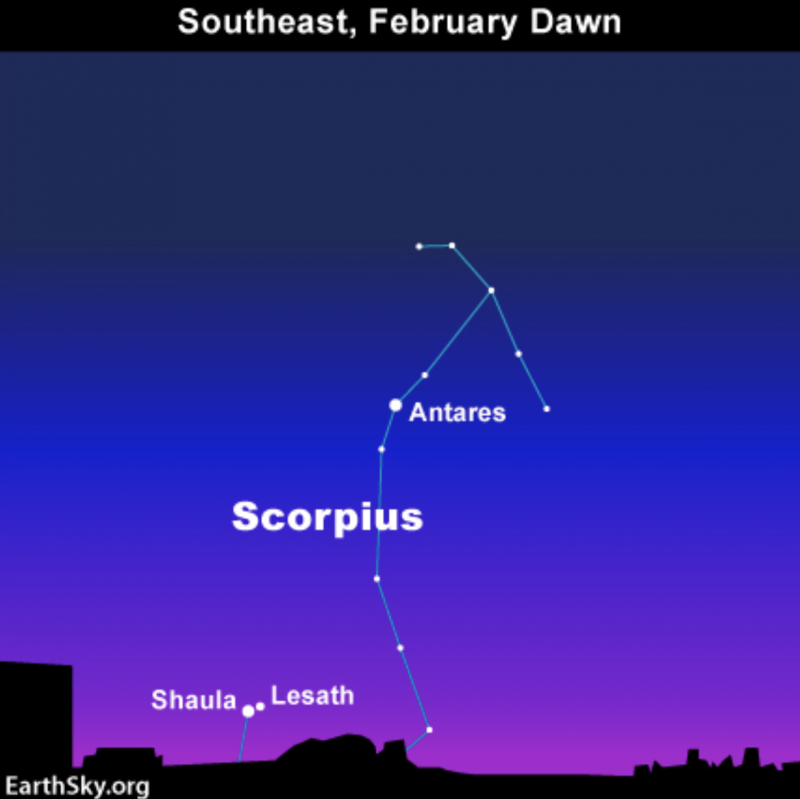
Image Credit: Earthsky
The stars Shaula and Lesath herald the coming spring
- Shaula and Lesath are stars in the constellation Scorpius and are considered a sign of the approaching spring.
- The Pawnee tribe used the position of the stars to determine the timing of their Spring Awakening ceremony.
- The presence of Shaula and Lesath over the horizon symbolized the breaking of ice and the arrival of waterfowl.
- Observing these stars in the southeastern sky before dawn indicates that spring is on its way.
Read Full Article
17 Likes
Nasa
91
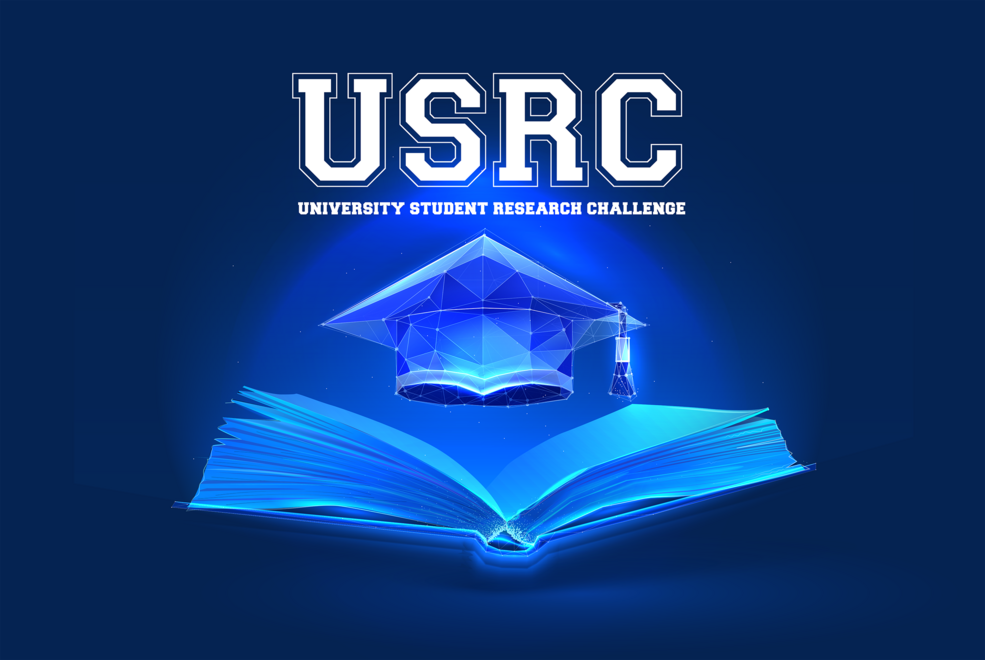
Image Credit: Nasa
NASA Selects New Round of Student-Led Aviation Research Awards
- NASA has selected two new university student teams to participate in real-world aviation research challenges.
- This round of the University Student Research Challenge (USRC) includes the first-ever award to a community college - Cerritos Community College.
- The selected teams will manage their own research projects, utilize state-of-the-art technology, and work alongside accomplished aeronautical researchers.
- The research topics include using environmentally friendly fire-retardant pellets to mitigate wildfires and designing a scaled-down prototype for an electric turbofan for supersonic aircraft.
Read Full Article
5 Likes
Digitaltrends
96

Image Credit: Digitaltrends
Firefly’s Blue Ghost captures stunning footage of lunar surface
- Firefly Aerospace’s Blue Ghost spacecraft captures stunning footage from above the lunar surface.
- Blue Ghost successfully completes lunar orbit maneuver, moving to a lower orbit around the moon.
- The spacecraft will experience communication blackouts while going around the far side of the moon.
- Blue Ghost aims to support future human exploration of the moon under NASA's Artemis program.
Read Full Article
5 Likes
Arstechnica
215
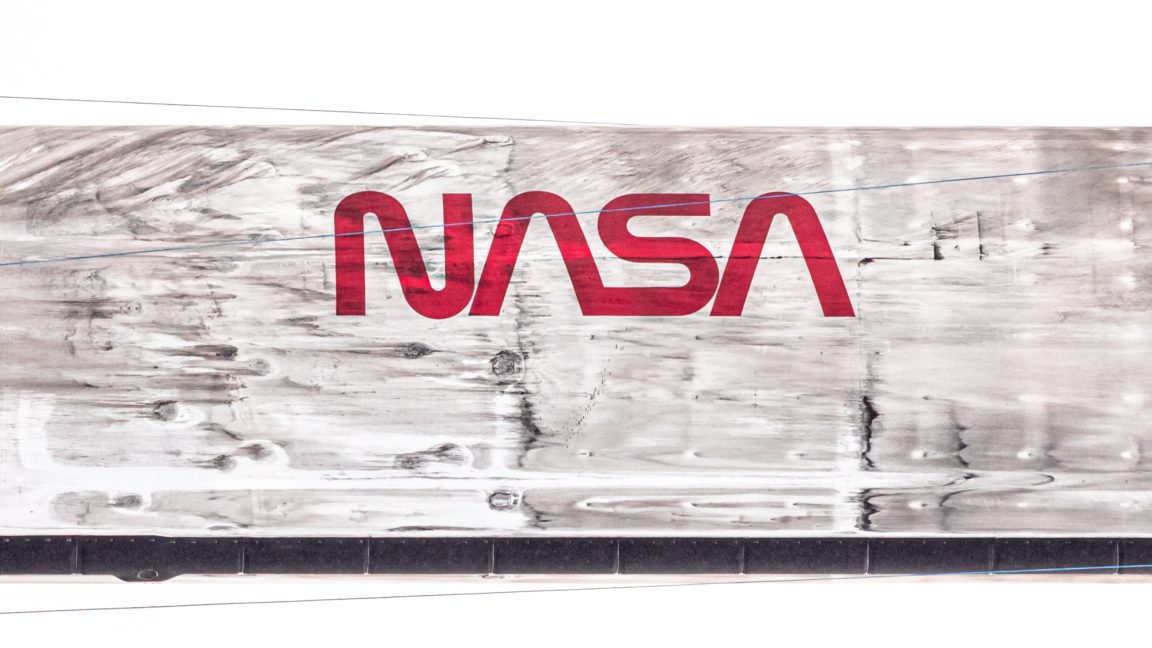
Image Credit: Arstechnica
In a last-minute decision, White House decides not to terminate NASA employees
- Unlike workers at many other federal agencies this week, probationary employees at NASA were not terminated on Tuesday.
- Employees at the space agency anticipated a directive from the White House Office of Personnel Management to fire probationary employees but it never came.
- The White House confirmed that probationary employees at NASA, comprising about 6% of the workforce, would not be terminated.
- It is unclear whether the reprieve applies to all field centers or only some of them.
Read Full Article
12 Likes
Digitaltrends
344
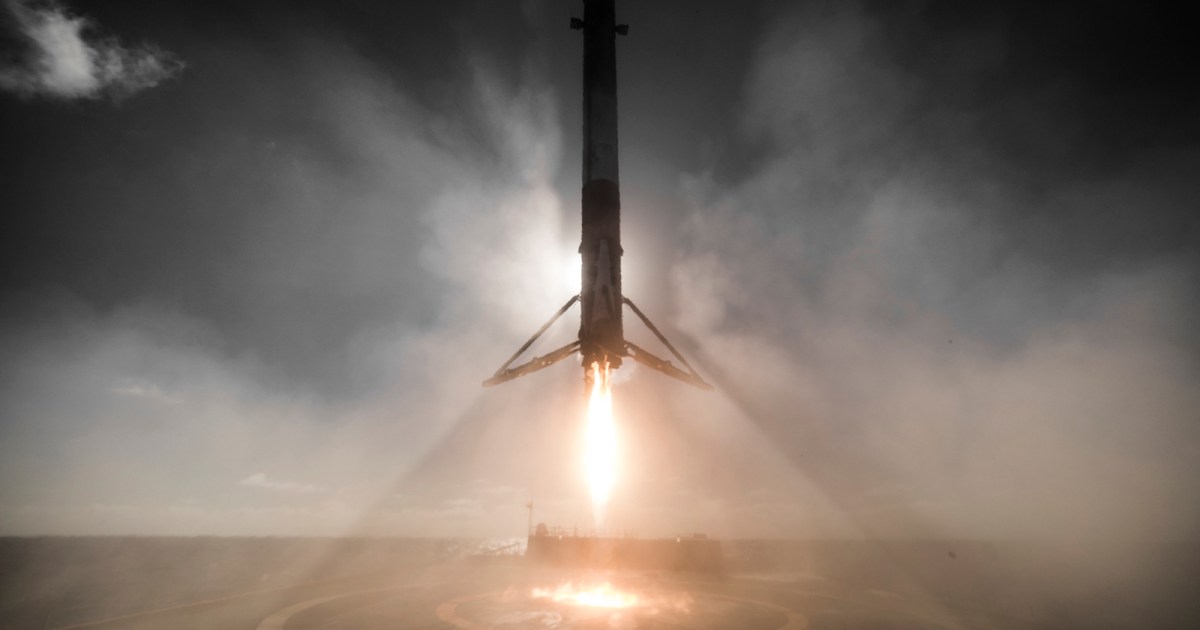
Image Credit: Digitaltrends
SpaceX just achieved another first with its Falcon 9 rocket
- SpaceX achieved a first by landing its Falcon 9 booster in The Bahamas. This marked the first international landing for SpaceX.
- The different landing location allows Falcon 9 to maximize its performance and provide winter weather recovery options.
- The Falcon 9 successfully deployed 23 Starlink satellites into low-Earth orbit.
- This was the 16th flight for the first-stage Falcon 9 booster, which has been successfully landing since 2015.
Read Full Article
20 Likes
Brighter Side of News
321

Image Credit: Brighter Side of News
Groundbreaking quantum simulation reveals a cataclysmic end to the universe
- Physicists proposed nearly half a century ago that the universe might be in a false vacuum state, which could potentially transition into a true vacuum, causing a fundamental shift in the cosmos.
- A study led by an international team used a quantum annealer to simulate false vacuum decay, a process where the universe's structure could completely change.
- The team observed bubble formation and interactions in real time, providing insight into how quantum transitions may have occurred in the early universe.
- The research is a significant leap in quantum simulation, offering a new way to study phase transitions and quantum fluctuations.
- By leveraging quantum annealers, researchers can explore non-equilibrium quantum systems and improve understanding of phase transitions.
- The study's implications extend beyond cosmology, impacting quantum computing and material science, potentially leading to breakthroughs in various fields.
- Insights from the research could enhance quantum computing performance by improving error management in qubits and processing information more effectively.
- The project, funded by UKRI and the Leverhulme Trust, demonstrates the intersection of fundamental physics and technological innovation in exploring the universe's mysteries.
- As quantum technology advances, simulating fundamental processes like vacuum decay could open new frontiers in physics, bringing theoretical concepts closer to reality.
- The study highlights the importance of curiosity-driven research and the potential for quantum computing to address deep questions about the nature of the Universe.
Read Full Article
19 Likes
Brighter Side of News
87

Image Credit: Brighter Side of News
Milky Way’s central black hole is generating massive bursts of energy
- Researchers using NASA’s James Webb Space Telescope have observed Sagittarius A*, the supermassive black hole at the center of the Milky Way, showing its unpredictable bursts of energy.
- The black hole, with a mass of four million times that of the Sun, is surrounded by an accretion disk that fuels its chaotic activity across various wavelengths.
- Sagittarius A* is unique in its continuous flaring activity, ranging from faint flickers to intense eruptions, never reaching a steady state.
- The recent study highlights the random nature of the flares and raises questions about the processes driving this variability.
- Observations revealed that Sagittarius A* produced multiple major flares per day, with no clear pattern or repetition in their variability.
- The emissions from the black hole are suspected to result from disturbances in the accretion disk and magnetic reconnection events within its extreme environment.
- Magnetohydrodynamic simulations suggest that changes in magnetic field strength and plasma density contribute to the dynamic behavior of Sagittarius A*.
- The study using JWST’s NIRCam unveiled delays between emissions at different wavelengths, providing insights into particles' energy loss around the black hole.
- Future observations aim to uncover hidden patterns in the black hole's activity and refine understanding of its variability.
- The research on Sagittarius A* offers valuable insights into supermassive black holes, showcasing advancements in observational astronomy and understanding extreme cosmic phenomena.
Read Full Article
5 Likes
For uninterrupted reading, download the app